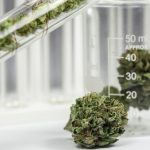For the first time, scientists have demonstrated that a component of cannabis reduces seizures in children with a rare form of epilepsy, marking a significant step in efforts to use marijuana and its derivatives to treat serious medical conditions.
The company that sponsored the Phase 3 trial, GW Pharmaceuticals, had already announced some of the results, but researchers said the full peer-reviewed study, published Wednesday in the New England Journal of Medicine, validated the importance of the research. They also pointed out that the drug, cannabidiol, helped some patients more than others and was associated with a range of sometimes severe side effects, a significant finding because some families have been treating their children on their own in states where recreational marijuana use is legal.
“We now have solid, rigorous scientific evidence that in this specific syndrome, cannabidiol is effective at reducing seizures,” said Dr. Orrin Devinsky, a neurologist at New York University Langone Medical Center and an author of the new study. But, he added, “This is not a panacea.”
Cannabidiol, which GW has branded as Epidiolex, is a non-hallucinogenic component of marijuana that can be purified and administered in oil.
For the trial, researchers enrolled 120 children from 2 to 18 years old with Dravet syndrome, a rare genetic form of epilepsy that kills up to 20 percent of patients by the time they are 20. There are no drugs approved specifically for Dravet.
During the study, the patients stayed on their normal treatment regimen, and half of them also received cannabidiol while the remainder were given a placebo. Over a 14-week treatment period, the median number of convulsive seizures in the cannabidiol group decreased from 12.4 to 5.9 per month; for the placebo group, the number went from 14.9 to 14.1.
In the cannabidiol group, 43 percent of patients had their number of seizures cut in half or more, compared with 27 percent in the placebo group. And 5 percent of patients taking cannabidiol saw their seizures disappear, compared with none in the placebo group.
Common side effects seen in the cannabidiol group included vomiting, fatigue, fever, drowsiness, and diarrhea. Eight patients in the group withdrew from the trial because of the severity of the side effects.
In an editorial published with the study, Dr. Samuel Berkovic of the University of Melbourne called the trial “welcome” and “the beginning of solid evidence for the use of cannabinoids in epilepsy.” But he noted that it needs to be replicated and that other studies will be required to know if cannabinoids — the different components of cannabis — can help with other forms of epilepsy and to treat adults.
As desperate families have sought to treat their children with cannabis or cannabidiol on their own, experts have cautioned that it can be risky. Researchers don’t know, for example, how cannabidiol will interact with other medications, and they know even less about how adding THC — a hallucinogenic cannabinoid — to the mix might affect children with epileptic syndromes. They also don’t know the long-term effects of taking cannabidiol.
For the trial, researchers enrolled 120 children from 2 to 18 years old with Dravet syndrome, a rare genetic form of epilepsy that kills up to 20 percent of patients by the time they are 20. There are no drugs approved specifically for Dravet.
During the study, the patients stayed on their normal treatment regimen, and half of them also received cannabidiol while the remainder were given a placebo. Over a 14-week treatment period, the median number of convulsive seizures in the cannabidiol group decreased from 12.4 to 5.9 per month; for the placebo group, the number went from 14.9 to 14.1.
In the cannabidiol group, 43 percent of patients had their number of seizures cut in half or more, compared with 27 percent in the placebo group. And 5 percent of patients taking cannabidiol saw their seizures disappear, compared with none in the placebo group.
Common side effects seen in the cannabidiol group included vomiting, fatigue, fever, drowsiness, and diarrhea. Eight patients in the group withdrew from the trial because of the severity of the side effects.
In an editorial published with the study, Dr. Samuel Berkovic of the University of Melbourne called the trial “welcome” and “the beginning of solid evidence for the use of cannabinoids in epilepsy.” But he noted that it needs to be replicated and that other studies will be required to know if cannabinoids — the different components of cannabis — can help with other forms of epilepsy and to treat adults.
As desperate families have sought to treat their children with cannabis or cannabidiol on their own, experts have cautioned that it can be risky. Researchers don’t know, for example, how cannabidiol will interact with other medications, and they know even less about how adding THC — a hallucinogenic cannabinoid — to the mix might affect children with epileptic syndromes. They also don’t know the long-term effects of taking cannabidiol.
(1222)





Leave A Reply